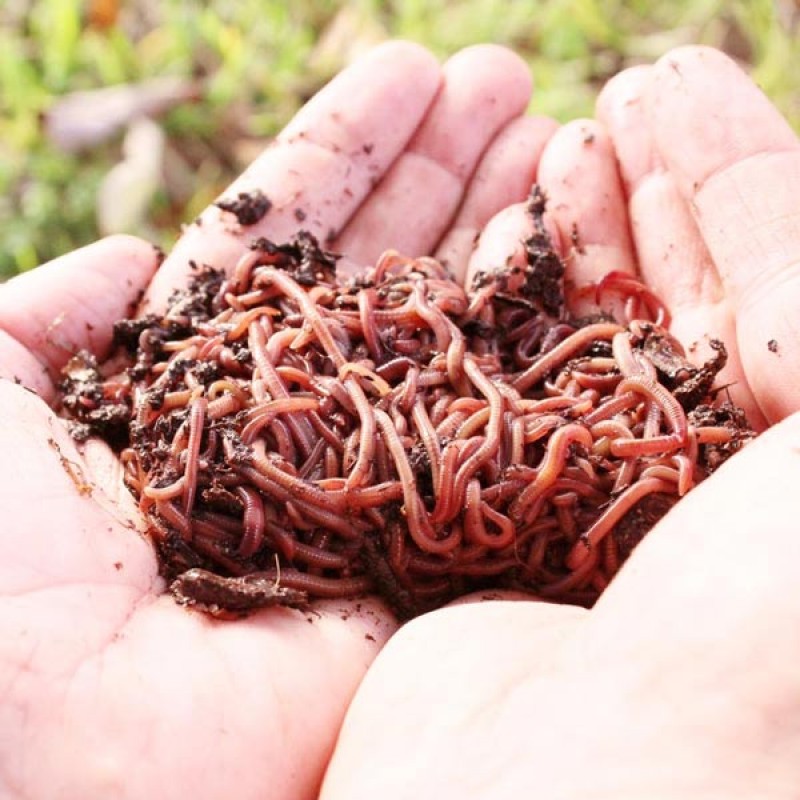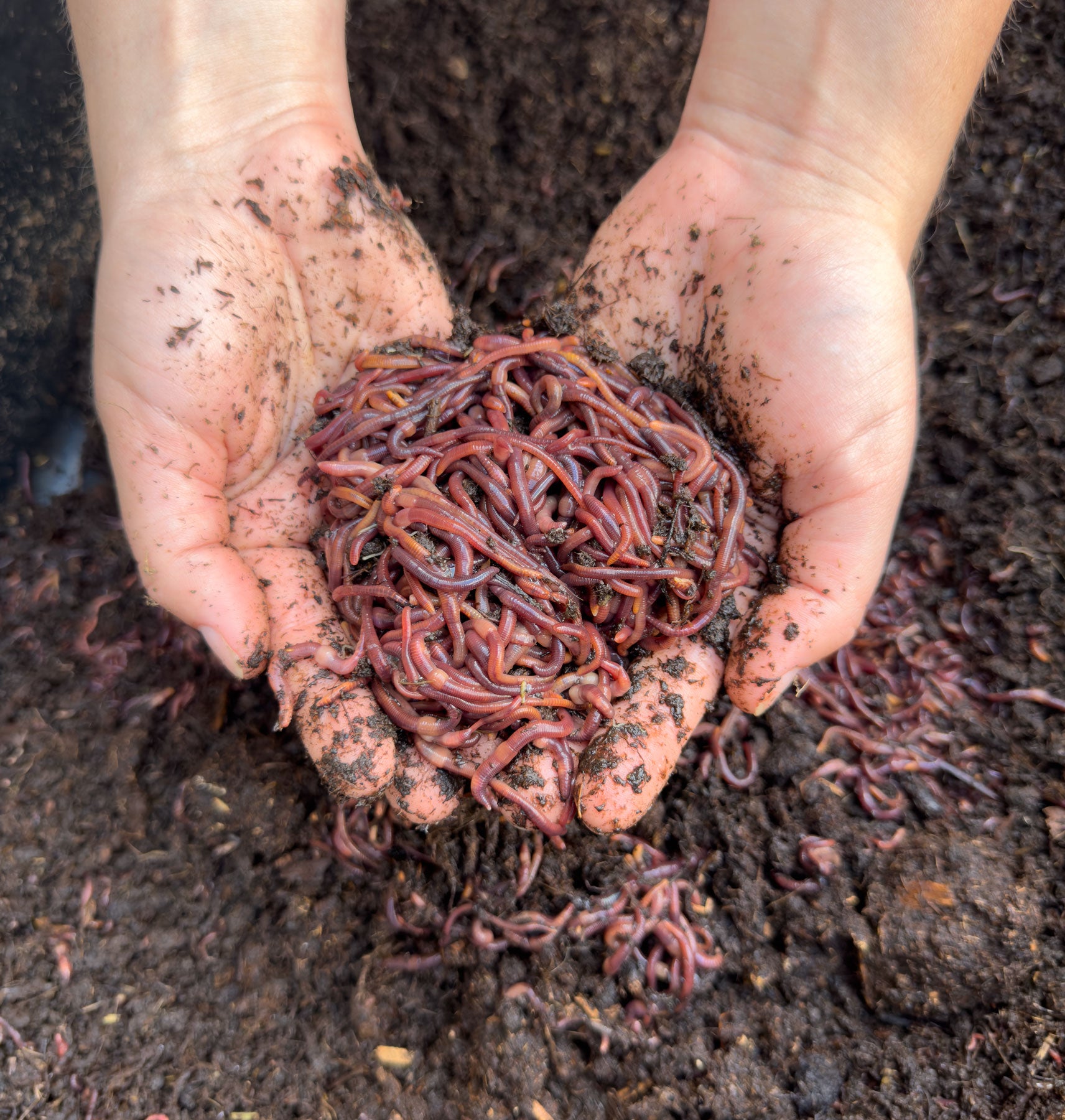Understanding Red Wiggler Composting: Crucial Practices for Healthy And Balanced Composting
Wiki Article
Discovering the Systems of Red Wiggler Composting: A Comprehensive Guide to the Refine and Its Favorable Effect on Lasting Gardening Practices
The complex systems of red wiggler composting, utilizing the special physiology of Eisenia fetida, provide a compelling opportunity for improving lasting horticulture techniques. This process not just changes organic waste right into nutrient-dense vermicompost but likewise promotes a much healthier dirt ecological community with improved aeration and microbial task. As city gardening gains grip, understanding the subtleties of this composting approach becomes progressively pertinent. The trip into its myriad benefits and finest techniques is simply beginning, prompting a closer evaluation of exactly how this technique can improve our horticulture methods.Understanding Red Wigglers
Red wigglers, medically known as Eisenia fetida, are a species of earthworm very related to for their efficiency in composting natural waste. These worms prosper in nutrient-rich settings, specifically in decaying raw material, making them suitable for vermicomposting systems - Red Wiggler Composting. Defined by their reddish-brown coloration and fractional bodies, red wigglers are smaller sized than typical earthworms, normally measuring in between three to four inches in lengthTheir unique physical traits improve their composting capabilities; for instance, they possess a high reproductive rate, allowing populations to increase rapidly under appropriate problems. Red wigglers eat natural product, breaking it down with their gastrointestinal systems, which results in nutrient-rich castings that function as an outstanding organic plant food. Their ravenous cravings allows them to process huge quantities of food waste successfully, considerably decreasing garbage dump payments.
Along with their composting expertise, red wigglers play a crucial role in soil health and wellness. Red Wiggler Composting. They freshen the soil and assist in the decomposition of raw material, further enhancing the soil ecological community. Understanding the features and ecological benefits of red wigglers is important for anybody looking to carry out lasting horticulture practices with efficient composting methods
The Composting Refine
The composting procedure involves breaking down organic products right into nutrient-rich compost, a task that red wigglers succeed at as a result of their specialized digestion systems. These worms consume food scraps, backyard waste, and various other organic matter, transforming them right into important garden compost via a collection of chemical and organic procedures.Initially, the organic issue is mixed with bed linen products such as shredded paper or dried leaves, developing an optimum setting for the worms. As the red wigglers consume this combination, they damage it down through their intestine, where microorganisms better decompose the material. This process creates warm, promoting microbial task, which speeds up decay.

Advantages of Red Wiggler Composting
Numerous garden enthusiasts and eco-conscious people acknowledge the countless advantages of red wiggler composting, making it a preferred selection for reliable waste management. One of the main advantages is its capacity to considerably lower natural waste in landfills - Red Wiggler Composting. Red wigglers successfully break down cooking area scraps and other biodegradable products, changing them right into nutrient-rich vermicompost that improves dirt healthMoreover, red wiggler composting enhances soil framework and fertility. The resulting vermicompost is brimming with advantageous microorganisms, which advertise plant growth and improve nutrient retention. This all-natural fertilizer not only sustains lasting horticulture practices yet also decreases dependence on chemical plant foods, cultivating a healthier community.
Additionally, red wiggler composting is a space-efficient method, making it suitable for urban gardeners with limited space. The procedure can be carried out inside your home or outdoors, allowing for year-round composting no matter environment conditions. Red wigglers are low-maintenance microorganisms that call for very little treatment, making them easily accessible for novice gardeners.
In essence, the benefits of red wiggler composting prolong past waste reduction; they add to healthier soils, lasting horticulture techniques, and environmental stewardship, placing it as an important practice in contemporary gardening.
Finest Practices for Composting
For successful red wiggler composting, sticking to best techniques is necessary to make best use of efficiency and make certain an efficient setting for these worms. This equilibrium promotes ideal disintegration and boosts the worms' health.
Next, screen moisture degrees, going for a damp, sponge-like uniformity. Overly have a peek at these guys damp conditions can cause anaerobic disintegration, while excessive dryness might hinder worm task. In addition, make certain correct oygenation by transforming the garden compost consistently, which helps prevent compaction and permits for sufficient oxygen circulation.
Temperature is one more vital aspect. Keep a range of 55 ° F to 77 ° F(13 ° C to 25 ° C) to advertise worm activity and microbial development. Avoid presenting meat, dairy products, and oily foods, as these can bring in bugs and produce smells.
Enhancing Lasting Gardening
Sustainable gardening embodies an alternative approach that harmonizes environmental concepts with sensible gardening methods. By including methods such as red wiggler composting, gardeners can substantially boost their practices, fostering a much more resilient environment. Red wigglers, renowned for their reliable disintegration capabilities, convert find organic waste into nutrient-rich garden compost, therefore enriching the soil without relying on chemical plant foods.Executing sustainable gardening techniques, such as crop rotation, companion planting, and mulching, further complements the benefits of composting. These techniques not only boost dirt framework and fertility however also promote biodiversity, drawing in helpful pests and microorganisms that add to grow health and wellness. Additionally, using native plants can decrease water usage and minimize maintenance, straightening with water conservation efforts.

Verdict
In verdict, red wiggler composting stands for a crucial method for enhancing lasting horticulture practices. Inevitably, the fostering of red wiggler composting can dramatically add to green gardening, profiting both urban and beginner garden enthusiasts in their cultivation initiatives.The detailed mechanisms of red wiggler composting, making use of the unique physiology of Eisenia fetida, provide an engaging avenue for improving sustainable gardening techniques. Understanding the characteristics and eco-friendly benefits of red wigglers Look At This is essential for any individual looking to execute lasting gardening techniques with efficient composting approaches.

In conclusion, red wiggler composting represents a crucial approach for improving sustainable gardening methods. Eventually, the fostering of red wiggler composting can dramatically contribute to environmentally friendly gardening, profiting both city and novice gardeners in their cultivation efforts.
Report this wiki page